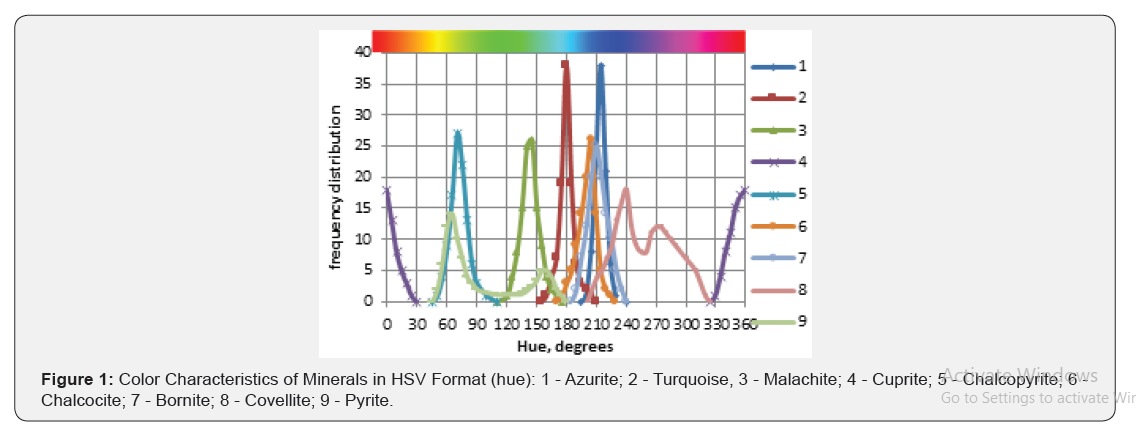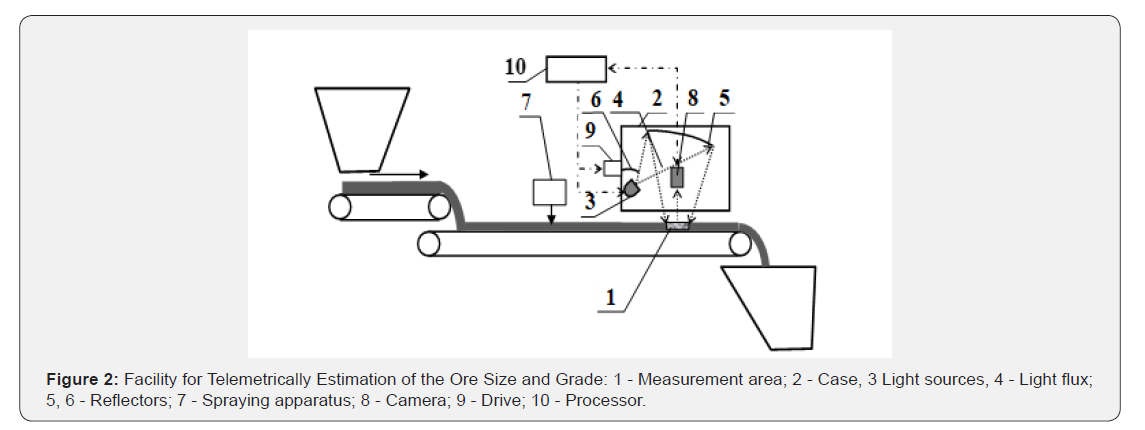Insights in Mining Science & Technology - Juniper Publishers
Introduction
In-stream ore grade analysis is a new trend in
effective control of ore benefication processes. On-line estimation of
ore grade can be implemented based on continuous measurement of the
mineralogical composition directly in-stream or using in-stream sampling
with the following analysis. Reliable separate determination of
minerals in ore is possible using modern formats of colour image
recognition. The spectral characteristics of minerals in visible light
are the source of information for optical spectrum-based estimation of
ore mineralogical composition (Figure 1). The task of determining the
grade of ore, entering processing, is to determine its similarity to the
main technological types of ores [1]. The calculation of ore grade was
carried out using a multi-criteria method for affiliation shares
calculations.
The system mathematical model provides for calculation of the incoming
ore affiliation by six (or more) significant parameters (minerals
contents in the ore). At the Erdenet processing plant (Mongolia), a new
facility for advanced ore diagnostics, based on optical analyzer of
mineral composition, was tested. The optical spectrum-based analysis
system was installed above the conveyor (Figure 2) for feeding ore to
the grinding operation [2]. The ore scanning on the conveyor belt is
carried out continuously. Then, using the algorithm, recognition of the
ore grade is carried out. For exact analysis, the special flatbed
facility was developed [3]. The measurement technique involves preparing
the ore sample, forming the measurement area in the form of a flat
portion of the sample, illumination and capture of the images in the
visible spectrum (Figure 3).



To calculate the required parameters of grinding and flotation,
special studies were carried out on the most pronounced samples
of the typical ores, and the process diagrams for their grind
ing and flotation were developed. The value of the pre-set function
SF for each parameter of the process was calculated as a
weighted average of the parameters values for each “typical” ore
type (SFi) considering the contribution of the given type in the
ore’s mixture using Equation (1):

where γi - relative weight fraction of an ore type in the ore
mixture incoming to processing. The predefined functions were
used as baseline in the local systems of automatic control of
grinding and flotation processes at the Erdenet processing plant.
Using the procedure for ore grade determination increases the
automatic control stability, as it allows a fast response to changes
in the incoming ore grade. Maintaining the optimum degree
of grinding and reagent consumption in the flotation provides
increasing recovery of copper and molybdenum into concentrates
by 0.3% and 1.1%, respectively, as well as decreasing the
consumption of reagents by 2–3% [4].
To Know more about Mining Science & Technology
Click here: https://juniperpublishers.com/imst/index.php
To Know more about our Juniper Publishers
Click here: https://juniperpublishers.com/index.php





It is really good article and it will be helpful for a Engineering Students for final year projects to make a Digital Image processing projects
ReplyDelete